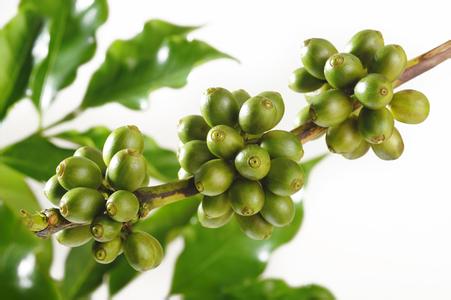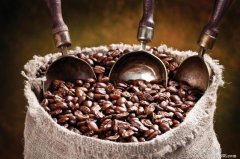South American beans-occasionally there are "unobtrusive surprises"

There is no doubt about South American coffee, especially Brazilian coffee, everyone will remember a lot about it without much introduction. Brazil is not only the largest coffee producer in the world, but also one of the birthplaces of coffee culture, which not only produces fine coffee with excellent quality of delicate washing, but also produces coffee for general exchange. Many people think that Brazilian coffee is mediocre, without the freshness and freshness of Central American coffee, nor the wild richness of African coffee, so that it cannot compare with the tame acidity of neighboring Colombia. therefore, many people use Brazilian coffee as the base for blending and appreciating coffee, the primary type of espresso in general espresso. At the same time, it is also the material for the "robbery" of coffee chain stores in the country.
Indeed, the light nature of Brazilian coffee is appropriate as a base for the analysis of coffee. However, the insipid taste is only the image of an overall mind, and occasionally, Brazilian coffee will bring you different kinds of unexpected joy.
This baking Brazil comes from Fazenda Joao de Campos Farm. The raw beans are uniform in size, but slightly subtle and not full. Short-spot beans are rarely combined beans. The appearance of raw beans is not rated, which is one of the reasons why Brazilian coffee is considered mediocre.
In the face of slightly stronger raw beans, firepower discipline is very needed. Because the density and water content of raw beans will be smaller than those of barren raw beans, improper fire control is easy to form dehydration too quickly, making the coffee rich and light, resulting in the condition of roasted coffee beans. These require inexhaustible practical experience to be accurate and do whatever you want. According to the color decisive baking degree between the level of High--City. To understand this knowledge of coffee is for those who are mixed with brand coffee to join in the process of joining but not short of it.
Taste is the most surprising place.
In the past, Brazilian coffee was sour when it was lightly roasted, but it always had a bitter taste. Brazil, on the other hand, has a purely different feeling.
First of all, in terms of aroma, although the aroma is not rare, there is a sweet feeling emerging, like a sticky nectar feeling. The baked aroma is more real when mixed with it.
The taste of coffee is even more unbelievable. This is the most plain Brazilian coffee in my mind. I don't feel any bitterness. Although the overall mellow is not high, but the rich taste makes the thin mellow not so prominent. The overall taste is smooth. More importantly, the sweetness is remarkable, which may be brought about by the nectar-like feeling in the aroma.
Instead of the monotony of Brazilian coffee in the past, such fresh and delicious Brazilian coffee is a pleasant surprise. It looks like it's not the raw bean's fault, it's not the producer's fault, it's actually our fault. 60% of the taste of a cup of coffee is determined by raw beans, 30% by roasting, and 10% by extraction. So no matter how hard we work, it can only affect 40% of the taste. But if we don't look at every baking and every extraction, we can't even make 40% of the taste, and these mistakes make the coffee beans lose their own characteristics. The road to coffee is very practical.
Important Notice :
前街咖啡 FrontStreet Coffee has moved to new addredd:
FrontStreet Coffee Address: 315,Donghua East Road,GuangZhou
Tel:020 38364473
- Prev

Interpretation of the characteristics of different kinds of coffee beans Coffee is a product of the tropics
Coffee is a product of the tropics. You may not believe that the best coffee producer in the world is in Yunnan, China.
- Next

Carefully filter "sick coffee beans to select defective beans"
Defective beans, as the name implies, are defective beans, and poor beans are like bad apples. The causes of the attacks are various and there are many kinds. Let's give a detailed introduction to the things that affect the quality of coffee. A variety of factors can cause bad behavior. The breeding of defective beans can occur as large as the growth of coffee trees and as small as the process of harvest and treatment of raw beans. Please don't.
Related
- Guji coffee producing area of Guji, Ethiopia: Humbela, Shakiso, Wulaga
- What is the most expensive variety of Qiloso in BOP multi-variety group?
- How to store the coffee beans bought home?
- Why are Yemeni coffee beans so rare now?
- Ethiopian Sidamo all Red Fruit Sun Sun Santa Vini Coffee beans
- SOE is mostly sour? What does it mean? Is it a single bean? what's the difference between it and Italian blending?
- Is Italian coffee beans suitable for making hand-brewed coffee?
- How to choose coffee beans when making cold coffee? What kind of coffee beans are suitable for making cold coffee?
- Just entered the pit to make coffee, what kind of coffee beans should be chosen?
- Can only Japan buy real Blue Mountain Coffee? What are authentic Jamaican Blue Mountain coffee beans?

